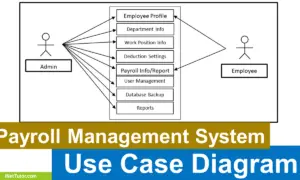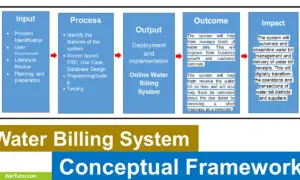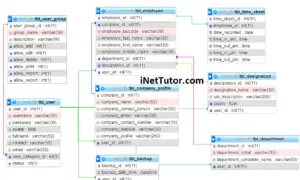Daily Time Record System ER Diagram
The capstone project entitled Daily Time Record System is a very common information system in an organization that records, monitor and archive the attendance of their employees. The Daily Time Record System or DTR is usually connected to the payroll system but it can also work as a unit. The said project is a cloud based and multi-company information system which means that the system can be used by many organizations.
You may visit and read the articles posted in relation to Daily Time Record System
- Daily Time Record System Database Design
- Daily Time Record Automation
- Computerized Daily Time Record System in Visual Basic 6.0
This article will discuss the step by step process on how to prepare the entity relationship diagram or ERD of the project entitled Daily Time Record System.
The first step in the development of the Daily Time Record System is to prepare the ER diagram that will serve as the basis later on in the creation of the actual database.
We will create and explain the process of making the entity relationship diagram of Daily Time Record System.
Let’s start from the symbols used in the ER Diagram.
Entity is represented by the rectangle shape. The entity will be our database table of Daily Time Record System later on.
Attribute is represented by the oval shape. This will be the columns or fields of each table in the Daily Time Record System.
Relationship is represented by diamond shape. This will determine the relationships among entities. This is usually in a form of primary key to foreign key connection.
We will follow the 3 basic rules in creating the ER Diagram.
- Identify all the entities.
- Identify the relationship between entities and
- Add meaningful attributes to our entities.
Step 1. In the Daily Time Record System we have the following entities
- User
- User Group
- Employee
- Time Sheet
- Designation
- Department
- Company Profile
- Back-up
Our design of Daily Time Record System consists of 8 entities; the specified entities will be our database tables in the design and implementation of DTR System database schema.
We will now draw the entities of the Daily Time Record System specified above and it will be represented by a rectangle shape. The image below is the entities identified in the scope of the Daily Time Record System.
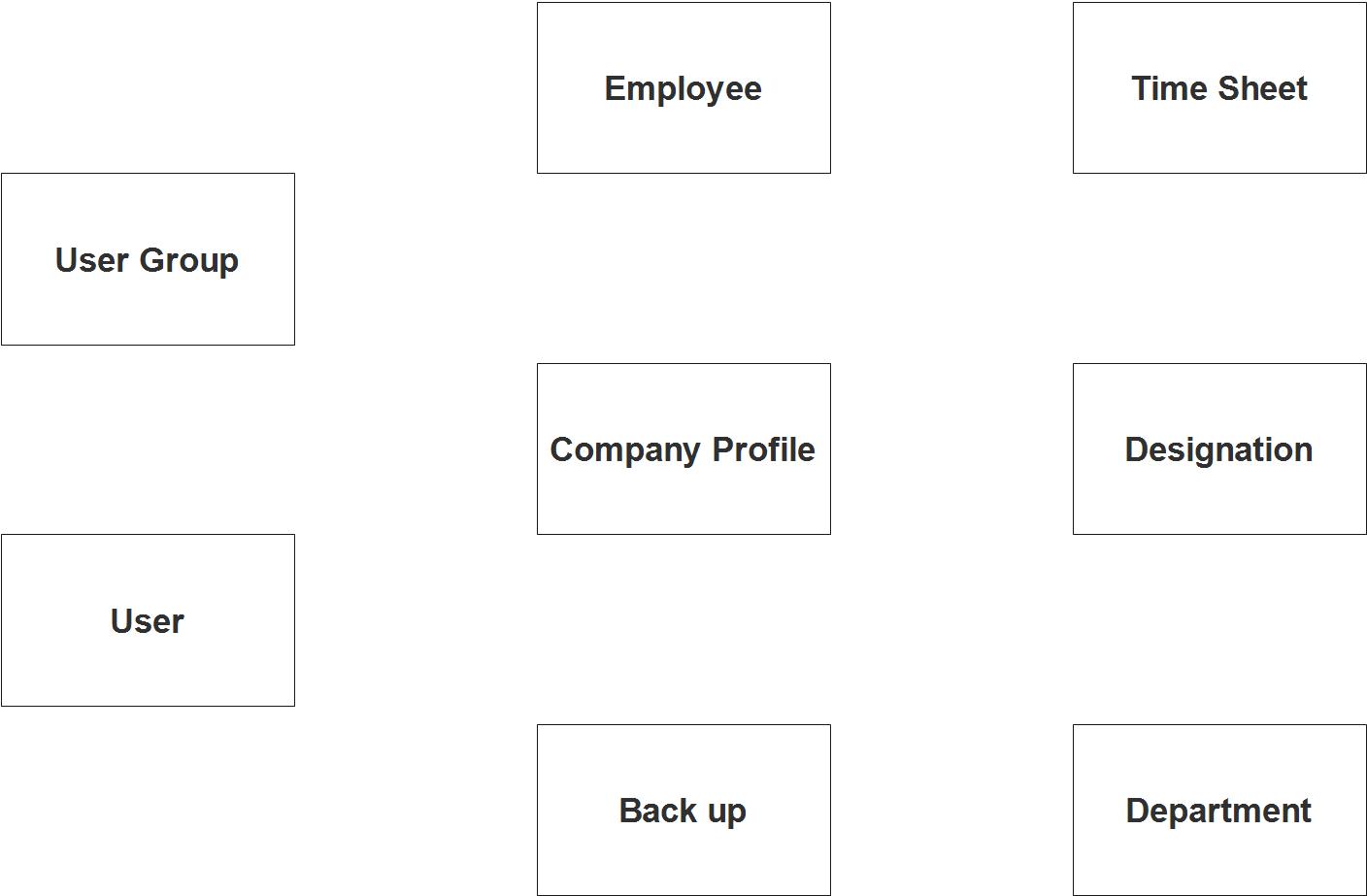
Step 2. After we have specified our entities, it is time now to connect or establish a relationship among the entities.
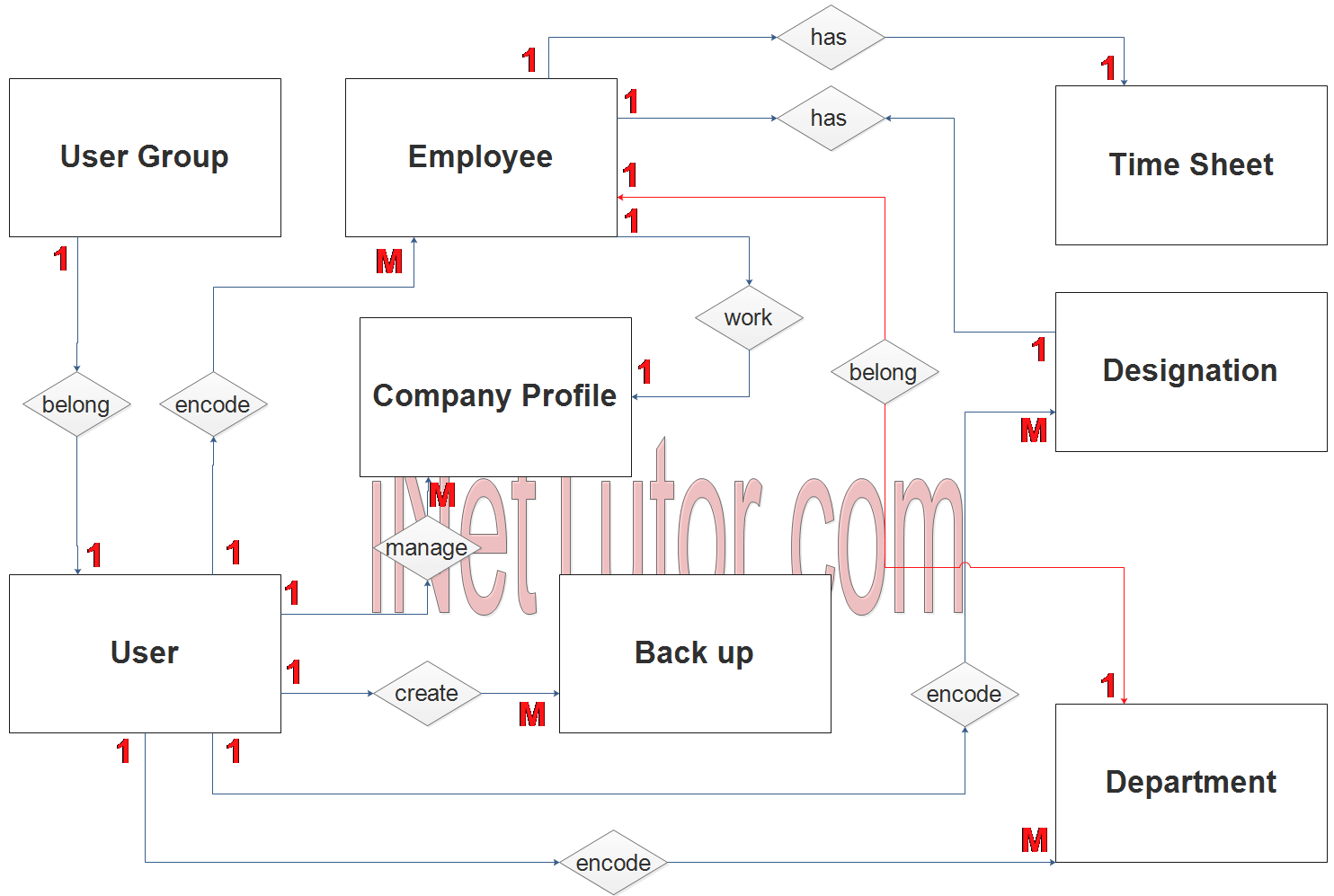
- User of the system belongs to a specific user type or group that corresponds with their role and permissions. The user group includes the functions the user can access (1 to 1 relationship).
- The user encodes, updates, and manages the department information (1 to many relationship).
- The user encodes, updates, and manages the employee information (1 to many relationship).
- The user encodes, updates, and manages the company profile information (1 to many relationship).
- The employee works for a company (1 to 1 relationship). The cardinality can also be 1 is to many since an employee can work for multiple companies.
- The employee belongs or assigned in a department. (1 to 1 relationship).
- The employee is also given a specific designation (1 to 1 relationship).
- The system also records and archives the employee time sheet (1 to 1 relationship).
- The user performs database back-up and maintenance (1 to many relationship).
Step 3. The last part of the ERD process is to add attributes to our entities.
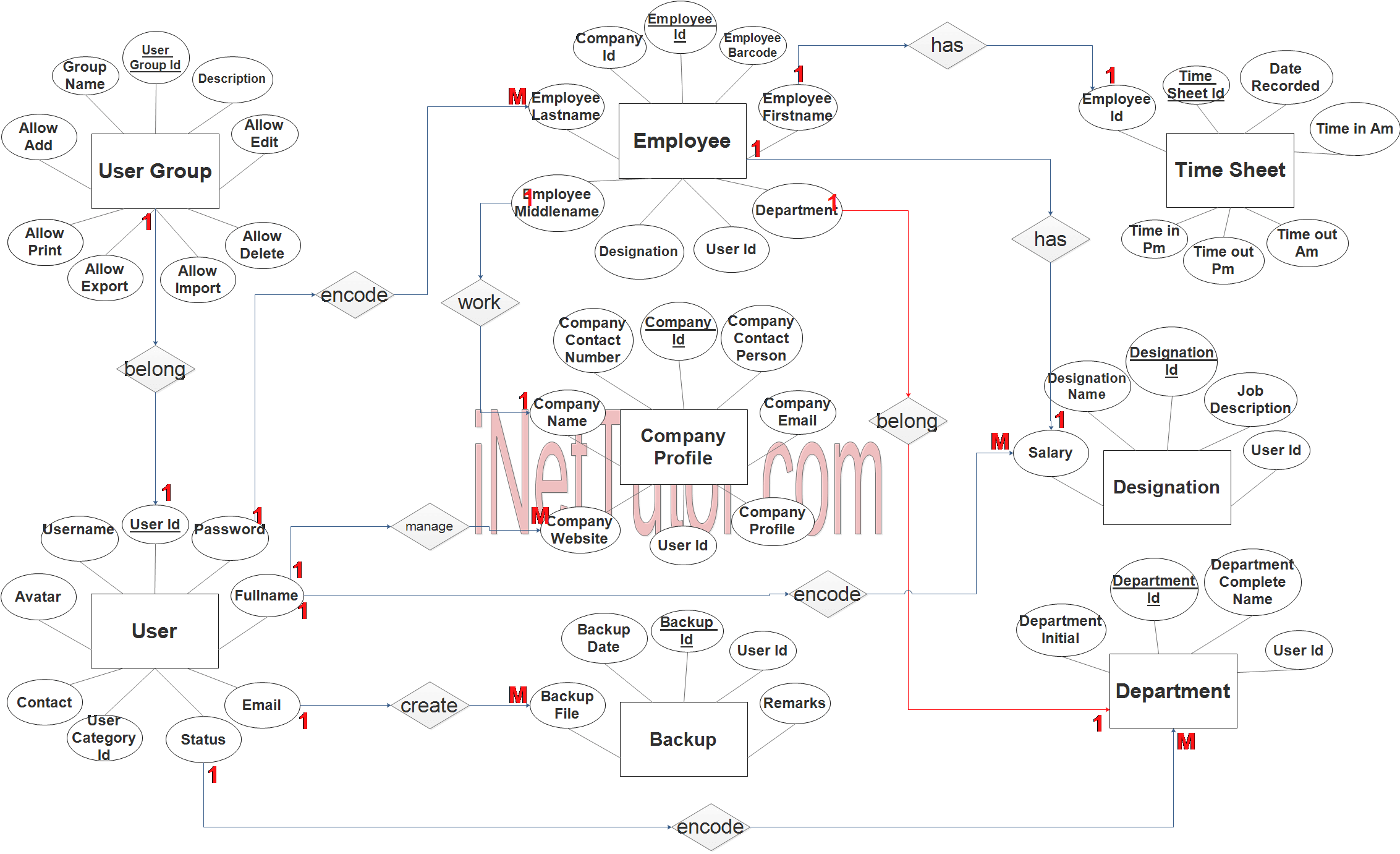
User Entity has the following attributes:
- User ID – primary key represented with underline
- Username
- Password
- Fullname
- Avatar
- Contact
- User Category – foreign key
- Status
User Group Entity has the following attributes:
- User Group ID – primary key represented with underline
- Name
- Description
- Allow Add
- Allow Edit
- Allow Print
- Allow Export
- Allow Import
- Allow Delete
Employee Entity has the following attributes:
- Employee ID – primary key represented with underline
- Company ID – foreign key
- Employee Barcode
- Employee Last name
- Employee First name
- Employee Middle name
- Designation ID – foreign key
- Department ID – foreign key
- User ID – foreign key
Time Sheet Entity has the following attributes:
- Time Sheet ID – primary key represented with underline
- Employee ID – foreign key
- Date Recorded
- Time in AM
- Time out AM
- Time in PM
- Time out PM
Designation Entity has the following attributes:
- Designation ID – primary key represented with underline
- Designation Name
- Job Description
- Salary
- User ID – foreign key
Department Entity has the following attributes:
- Department ID – primary key represented with underline
- Department Initial
- Department Complete Name
- User ID – foreign key
Company Profile Entity has the following attributes:
- Company ID – primary key represented with underline
- Company Name
- Company Contact Number
- Company Contact Person
- Company Email
- Company Website
- Company Profile
- User ID – foreign key
Back-up Entity has the following attributes:
- Backup ID – primary key represented with underline
- Backup Date
- Backup File
- Remarks
- User ID – foreign key
Note: all attributes with underline represents the primary key of the entity or table.
The next step is to convert the plan designed on ER Diagram into the actual database, please search for the Daily Time Record System article which was already posted.
Contact us on our facebook page for the softcopy of the Daily Time Record System.
You may visit our facebook page for more information, inquiries and comments.
Hire our team to do the project.
